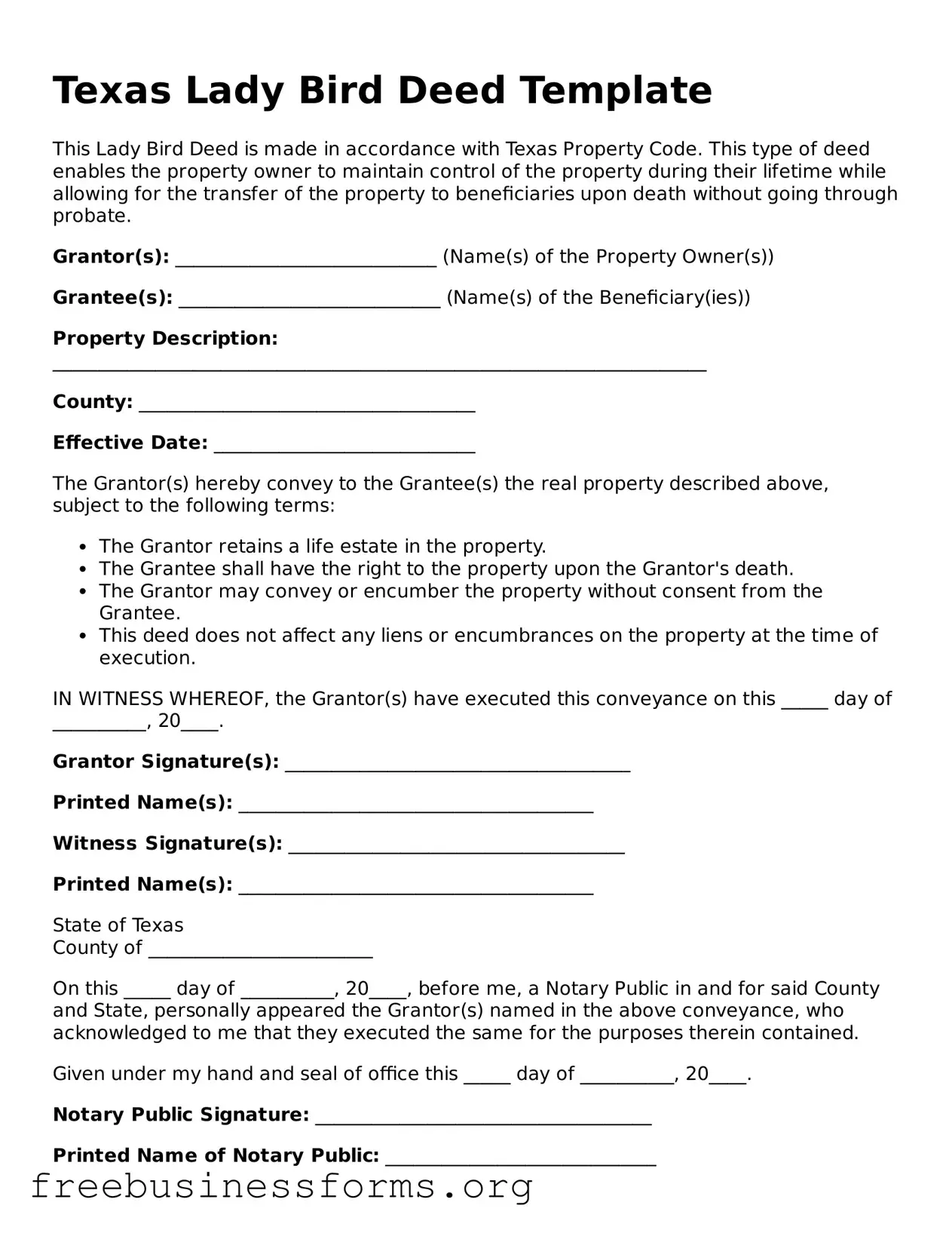Texas Lady Bird Deed Template
This Lady Bird Deed is made in accordance with Texas Property Code. This type of deed enables the property owner to maintain control of the property during their lifetime while allowing for the transfer of the property to beneficiaries upon death without going through probate.
Grantor(s): ____________________________ (Name(s) of the Property Owner(s))
Grantee(s): ____________________________ (Name(s) of the Beneficiary(ies))
Property Description: ______________________________________________________________________
County: ____________________________________
Effective Date: ____________________________
The Grantor(s) hereby convey to the Grantee(s) the real property described above, subject to the following terms:
- The Grantor retains a life estate in the property.
- The Grantee shall have the right to the property upon the Grantor's death.
- The Grantor may convey or encumber the property without consent from the Grantee.
- This deed does not affect any liens or encumbrances on the property at the time of execution.
IN WITNESS WHEREOF, the Grantor(s) have executed this conveyance on this _____ day of __________, 20____.
Grantor Signature(s): _____________________________________
Printed Name(s): ______________________________________
Witness Signature(s): ____________________________________
Printed Name(s): ______________________________________
State of Texas
County of ________________________
On this _____ day of __________, 20____, before me, a Notary Public in and for said County and State, personally appeared the Grantor(s) named in the above conveyance, who acknowledged to me that they executed the same for the purposes therein contained.
Given under my hand and seal of office this _____ day of __________, 20____.
Notary Public Signature: ____________________________________
Printed Name of Notary Public: _____________________________
My Commission Expires: ________________________________
